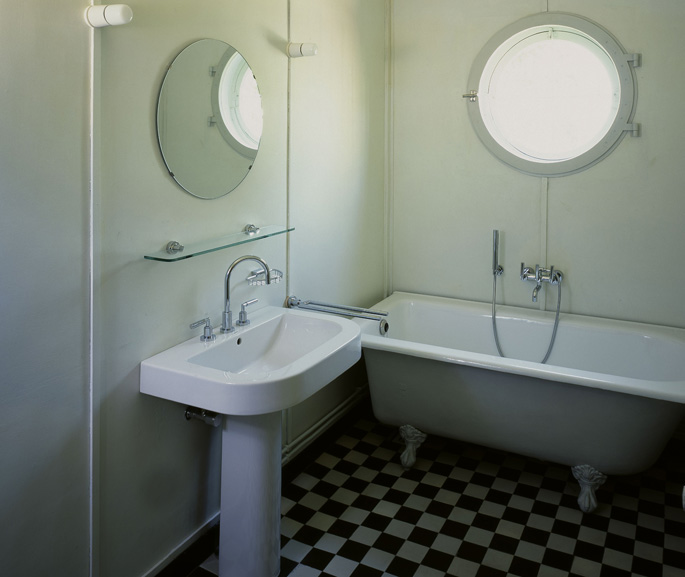Renovations

If the history of Einstein´s house between 1933 and 1945 was often tragic, then its history from 1945 to the present was often comic. The Russians, hoping that the socialist Einstein would rather return to a communist Germany than remain in a capitalist America, made plans to repair the house. When it became clear that Einstein wasn´t coming back, the house was rented to a barkeepers family instead. In 1953, Capuths then-mayor, Hans Hartmann, tried to persuade the GDR Academy of Sciences to declare the house an historical monument, through which extra funding would become available for repairs. One can only imagine the awkwardness felt at the Academy after it was discovered that Hartmann had already moved into the house himself.
Shortly before Einstein died in April 1955, a commemorative wooden plaque was erected and the house placed on a list of historical sites. The Academys commitment to the house nevertheless remained, at best, half-hearted. When Hartmann fled to the West in 1958, the house was rented to a large family that kept chickens and dogs. Questions concerning reparations, the future use of the house, and renovations didn´t begin to make it past the bureaucratic level until 1974, when East Germany and the United States resumed diplomatic relations. The thought of how foreign visitors would react to the state of the house forced the GDR into action. In 1978 the Academy became the official caretaker of the house and secured a sizeable sum from the government for a complete renovation. For the hundredth anniversary celebration of Einstein´s birth in 1979, the house opened for public tours, seminars, receptions, and guests. Konrad Wachsmann flew from Los Angeles to visit the house for its reopening. Officially, he praised the renovation, but privately he was disappointed with some of the work. Damaged paneling in the living room had been inappropriately replaced, the glaze used on the interior wood was too dark, and several aspects of the interior design failed to capture the ambience of the original.
After the GDR Academy of Sciences was dissolved in 1991, the house went back into the possession of the Caputh municipality and the Federal German State of Brandenburg. In 1993 the newly-established Einstein Forum assumed administrative responsibility for the house. An important question in the post-reunification period concerned the ownership of the property, which had since become quite knotty. After a long period of litigation, it was determined that the house belonged to a community of twelve heirs, ranging from the Hebrew University in Jerusalem to an animal shelter in New Jersey. Hebrew University, to which Einstein had willed the rest of his estate, owned 70% of the property, with the remaining 30% distributed among the other heirs. In 2004 all were finally entered into the land register.
The Einstein house remained open at least two days a week throughout most of the 1990s until severe problems with the roof and general dilapidation forced the house to close in 2001. In the process of carrying out emergency repairs, a major conservation project was proposed. Ruth Cornelsen from the Cornelsen Culture Foundation and the German Federal Government both responded with generous funding for the much-needed renovations. Soon after, the Potsdam architectural firm Kühn-von Kaehne & Lange began the work of restoring the house to its original state in time for the Einstein Year celebrations in 2005.